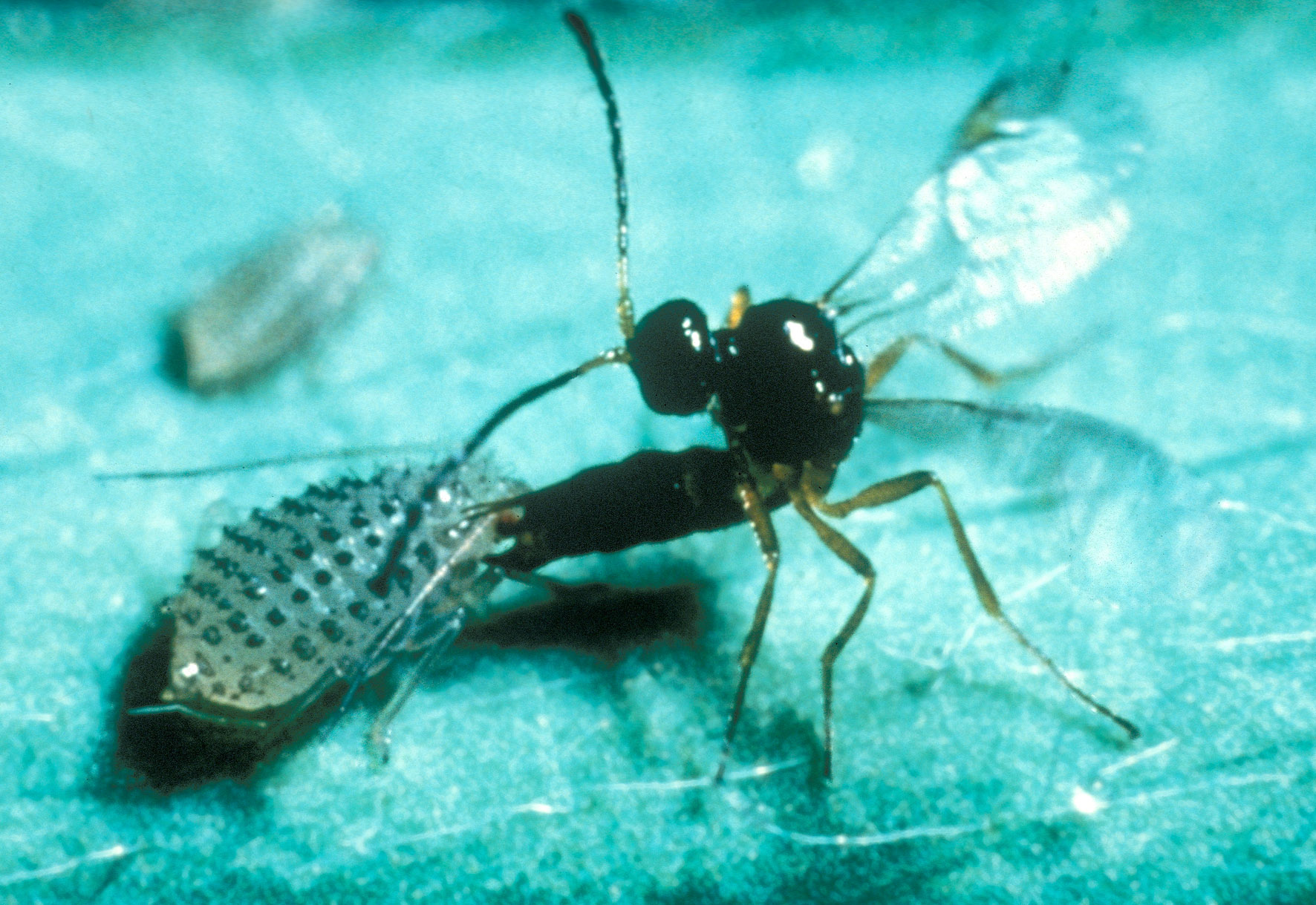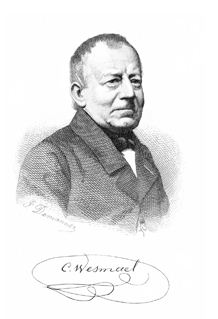|
Listrodromus Nycthemerus
''Listrodromus nycthemerus'', the holly blue Darwin wasp, is a species of ichneumon wasp belonging to the family Ichneumonidae. This species is a parasitoid, its sole host species being the holly blue butterfly (''Celastrina argiolus''). Taxonomy ''Listrodromus nycthemerus'' was first formally described as ''Ichneumon nycthemerus'' by the German zoologist Johann Ludwig Christian Gravenhorst from Piedmont. This species was classified in the new genus ''Listrodromus'' in 1845 by Constantin Wesmael, this species being the type species of that genus. Traditionally the genus was included in the tribe Listrodromini within the subfamily Ichneumoninae but is now classified within tribe Ichneumonini. Description ''Listrodromus nycthemerus'' is a very small wasp which is predominantly black and yellow. This species has a body length of . Distribution ''Listrodromus nycthemerus'' has been recorded from Europe where records come from Ireland, Great Britain, Netherlands, France, Spain, Ge ... [...More Info...] [...Related Items...] OR: [Wikipedia] [Google] [Baidu] |
Johann Ludwig Christian Gravenhorst
Johann Ludwig Christian Carl Gravenhorst (14 November 1777 – 14 January 1857), sometimes Jean Louis Charles or Carl, was a German entomologist, herpetologist, and zoologist. Life Gravenhorst was born in Braunschweig. His early interest in insects was encouraged by two of his professors, both amateur entomologists. He entered the University of Helmstedt to study law in 1797. However, the death of his father two years later left him a great fortune; so he was able to change his direction. He enrolled at the University of Göttingen where he followed the courses of Johann Friedrich Blumenbach. He returned to present his thesis to Helmstädt on a subject of entomology. He went to Paris in 1802 and there met Georges Cuvier, Pierre André Latreille, and Alexandre Brongniart. Parallel to his studies, he assembled, thanks to his financial means, a very important natural history collection. In 1805, he obtained a professorial chair in Göttingen and published the followin ... [...More Info...] [...Related Items...] OR: [Wikipedia] [Google] [Baidu] |
Family (biology)
Family ( la, familia, plural ') is one of the eight major hierarchical taxonomic ranks in Linnaean taxonomy. It is classified between order and genus. A family may be divided into subfamilies, which are intermediate ranks between the ranks of family and genus. The official family names are Latin in origin; however, popular names are often used: for example, walnut trees and hickory trees belong to the family Juglandaceae, but that family is commonly referred to as the "walnut family". What belongs to a family—or if a described family should be recognized at all—are proposed and determined by practicing taxonomists. There are no hard rules for describing or recognizing a family, but in plants, they can be characterized on the basis of both vegetative and reproductive features of plant species. Taxonomists often take different positions about descriptions, and there may be no broad consensus across the scientific community for some time. The publishing of new data and opi ... [...More Info...] [...Related Items...] OR: [Wikipedia] [Google] [Baidu] |
Ichneumonidae
The Ichneumonidae, also known as the ichneumon wasps, Darwin wasps, or ichneumonids, are a family of parasitoid wasps of the insect order Hymenoptera. They are one of the most diverse groups within the Hymenoptera with roughly 25,000 species currently described. However, this likely represents less than a quarter of their true richness as reliable estimates are lacking, along with much of the most basic knowledge about their ecology, distribution, and evolution.Quicke, D. L. J. (2015). The braconid and ichneumonid parasitoid wasps: biology, systematics, evolution and ecology. Chichester: John Wiley & Sons, Ltd. Ichneumonid wasps, with very few exceptions, attack the immature stages of holometabolous insects and spiders, eventually killing their hosts. They thus fulfill an important role as regulators of insect populations, both in natural and semi-natural systems, making them promising agents for biological control. The distribution of the ichneumonids was traditionally consi ... [...More Info...] [...Related Items...] OR: [Wikipedia] [Google] [Baidu] |
Parasitoid
In evolutionary ecology, a parasitoid is an organism that lives in close association with its host (biology), host at the host's expense, eventually resulting in the death of the host. Parasitoidism is one of six major evolutionarily stable strategy, evolutionary strategies within parasitism, distinguished by the fatal prognosis for the host, which makes the strategy close to predation. Among parasitoids, strategies range from living inside the host (''endoparasitism''), allowing it to continue growing before emerging as an adult, to Paralysis, paralysing the host and living outside it (''ectoparasitism''). Hosts can include other parasitoids, resulting in hyperparasitism; in the case of oak galls, up to five levels of parasitism are possible. Some parasitoids Behavior-altering parasite, influence their host's behaviour in ways that favour the propagation of the parasitoid. Parasitoids are found in a variety of Taxon, taxa across the insect superorder Endopterygota, whose compl ... [...More Info...] [...Related Items...] OR: [Wikipedia] [Google] [Baidu] |
Holly Blue
The holly blue (''Celastrina argiolus'') Retrieved April 20, 2018. is a butterfly that belongs to the lycaenids or blues family and is native to the Palearctic. The holly blue has pale silver-blue wings spotted with pale ivory dots. Seitz describes it "Male above shining violet blue, only the apical portion of the costal margin being minutely edged with white. The female has both wings broadly bordered with dark, the margin of the hindwing bearing vestiges of ocelli. Underside silver-white, in the disc a row of black dots, some of which are elongate, and before the margin blackish shadowy dots. Egg very flat, whitish. Larva green or brown, marked with yellowish white, bearing catenulate stripes on the back, on segment 7 a gland to attract ants; head brown. On Ivy, ''Ilex'', ''Evonymus'', ''Rhamnus'', ''Robinia'', ''Genista'', ''Spartium'', ''Astragalus'', ''Rubus'', ''Erica'', ''Pyrus'' and many other plants; in Europe visited usually by ants of the genus ''Lasius''; in June an ... [...More Info...] [...Related Items...] OR: [Wikipedia] [Google] [Baidu] |
Species Description
A species description is a formal description of a newly discovered species, usually in the form of a scientific paper. Its purpose is to give a clear description of a new species of organism and explain how it differs from species that have been described previously or are related. In order for species to be validly described, they need to follow guidelines established over time. Zoological naming requires adherence to the ICZN code, plants, the ICN, viruses ICTV, and so on. The species description often contains photographs or other illustrations of type material along with a note on where they are deposited. The publication in which the species is described gives the new species a formal scientific name. Some 1.9 million species have been identified and described, out of some 8.7 million that may actually exist. Millions more have become extinct throughout the existence of life on Earth. Naming process A name of a new species becomes valid (available in zo ... [...More Info...] [...Related Items...] OR: [Wikipedia] [Google] [Baidu] |
Piedmont
it, Piemontese , population_note = , population_blank1_title = , population_blank1 = , demographics_type1 = , demographics1_footnotes = , demographics1_title1 = , demographics1_info1 = , demographics1_title2 = , demographics1_info2 = , demographics1_title3 = , demographics1_info3 = , timezone1 = CET , utc_offset1 = +1 , timezone1_DST = CEST , utc_offset1_DST = +2 , postal_code_type = , postal_code = , area_code_type = ISO 3166 code , area_code = IT-21 , blank_name_sec1 = GDP (nominal) , blank_info_sec1 = €137 billion (2018) , blank1_name_sec1 = GDP per capita , blank1_info_sec1 = €31,500 (2018) , blank2_name_sec1 = HDI (2019) , blank2_info_sec1 = 0.898 · 10th of 21 , blank_name_sec2 = NUTS Region , blank_info_sec2 = ITC1 , website www.regio ... [...More Info...] [...Related Items...] OR: [Wikipedia] [Google] [Baidu] |
Listrodromus
''Listrodromus'' is a genus of ichneumon wasps belonging to the family Ichneumonidae. These wasps are parasitoids of butterflies of the family Lycaenidae Lycaenidae is the second-largest family of butterflies (behind Nymphalidae, brush-footed butterflies), with over 6,000 species worldwide, whose members are also called gossamer-winged butterflies. They constitute about 30% of the known butterfly ..., laying eggs in the caterpillars. Species The following species are classified in the genus: References {{taxonbar, from=Q14514667 Ichneumoninae Ichneumonidae genera ... [...More Info...] [...Related Items...] OR: [Wikipedia] [Google] [Baidu] |
Constantin Wesmael
Constantin Wesmael (4 October 1798, in Brussels – 26 October 1872, near to Saint-Josse-ten-Noode) was a Belgian entomologist. Life Of modest origin, he was granted a bursary to study law. He taught, initially, humanities in Charleroi before teaching sciences at the Athenaeum of Brussels. He was, next a professor of zoology at the school of veterinary surgeon and agriculture. He specialized in Ichneumonidae. Collection According to a note made by Baron de Sélys Longchamps, Wesmael gave his Braconidae to Mr. Haliday, without knowing however that this Irish scientist would be later established in Italy, and that after his death his collection would pass via Edward Perceval Wright to Dublin Museum. However, in the copy of the biography of Wesmael by Selys, Dr. Jacobs noted next to the sentence written by Selys (p. 235) (He gave his Braconides to Mr. Haliday), this note:: Error! they were found by me... Both statements are true and Wesmael's Braconidae are ... [...More Info...] [...Related Items...] OR: [Wikipedia] [Google] [Baidu] |
Tribe (biology)
In biology, a tribe is a taxonomic rank above genus, but below family (biology), family and subfamily. It is sometimes subdivided into subtribes. By convention, all taxonomic ranks from genus upwards are capitalized, including both tribe and subtribe. In zoology, the standard ending for the name of a zoological tribe is "-ini". Examples include the tribes Goat-antelope#Tribe Caprini, Caprini (goat-antelopes), Hominini (hominins), Bombini (bumblebees), and Thunnini (tunas). The tribe Hominini is divided into subtribes by some scientists; subtribe Hominina then comprises "humans". The standard ending for the name of a zoological subtribe is "-ina". In botany, the standard ending for the name of a botanical tribe is "-eae". Examples include the tribes Acalypheae and Scilloideae#Hyacintheae, Hyacintheae. The tribe Hyacintheae is divided into subtribes, including the subtribe Massoniinae. The standard ending for the name of a botanical subtribe is "-inae". In bacteriology, the form ... [...More Info...] [...Related Items...] OR: [Wikipedia] [Google] [Baidu] |
Subfamily
In biological classification, a subfamily ( Latin: ', plural ') is an auxiliary (intermediate) taxonomic rank, next below family but more inclusive than genus. Standard nomenclature rules end subfamily botanical names with "-oideae", and zoological names with "-inae". See also * International Code of Nomenclature for algae, fungi, and plants The ''International Code of Nomenclature for algae, fungi, and plants'' (ICN) is the set of rules and recommendations dealing with the formal botanical names that are given to plants, fungi and a few other groups of organisms, all those "trad ... * International Code of Zoological Nomenclature * Rank (botany) * Rank (zoology) Sources {{biology-stub ... [...More Info...] [...Related Items...] OR: [Wikipedia] [Google] [Baidu] |
Ichneumoninae
Ichneumoninae is a worldwide subfamily of the parasitic wasp family Ichneumonidae. Ichneumoninae are koinobiont or idiobiont endoparasitoids of Lepidoptera. It is the second largest subfamily of Ichneumonidae, with 373 genera. Ichneumonines are often large, conspicuous colourful insects. They have a 5-sided areolet, a dorso-ventrally flattened abdomen, a short or absent sternaulus and the clypeus is truncate, exposing the labium. There are more than 420 genera and 4375 described species in Ichneumoninae. Ichneumoninae was formerly made up of 15 tribes, but research published in 2021 determined that the tribes Ceratojoppini, Clypeodromini, Compsophorini, Ctenocalini, Goedartiini, Heresiarchini, Ischnojoppini, Joppocryptini, Listrodromini, and Oedicephalini should be incorporated into Ichneumonini as junior synonyms. After these tribes were merged and two new tribes were added, Ichneumoninae consisted of 7 tribes, with Ichneumonini the largest by far with well over 300 g ... [...More Info...] [...Related Items...] OR: [Wikipedia] [Google] [Baidu] |





